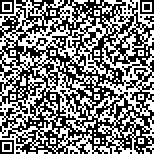下载中心
优秀审稿专家
优秀论文
相关链接
摘要

开放复杂目标体系的热辐射方向性的机理已经由矩阵表达式阐述得很清晰 ,但是在地表组分温度反演中 ,多角度数据间高度相关使得反演问题成为一个相关性病态问题。相关性是提高反演精度的主要障碍。以行播冬小麦为例 ,进一步提出一种利用先验知识 ,将矩阵表达与对象统计特性相结合可以提高反演稳定性和精度的方法 ,模拟实验也验证了这种思路的有效性
The mechanism of open complex objects' thermal radiation characteristics has been elucidated. But in retrieval of LST, the high correlation of multi-angle data is the dominating obstacle for better retrieval. Taking advance of predefined knowledge can improve precision. In this paper, we divided the received radiation brightness to two parts, one is the average brightness of a land area and the other is the relative departure of each pixel to the average. We considered that the former can retrieve the average component temperature by the Matrix Expression directly and the latter can retrieve the component temperature's relative departure by a statistical matrix. This statistical matrix is a regressive one, which still keep the linear relationship between the measured departure and retrieval departure. We utilized the least-square rule to get the regressive matrix ,which includes the statistic characteristics of retrieved brightness of sensor and the land component radiation brightness. Our simulated experiment also validated this method. We point out that at present the lack of great deal of measured data of matching data from sensor and land limit the generalization of this method.

